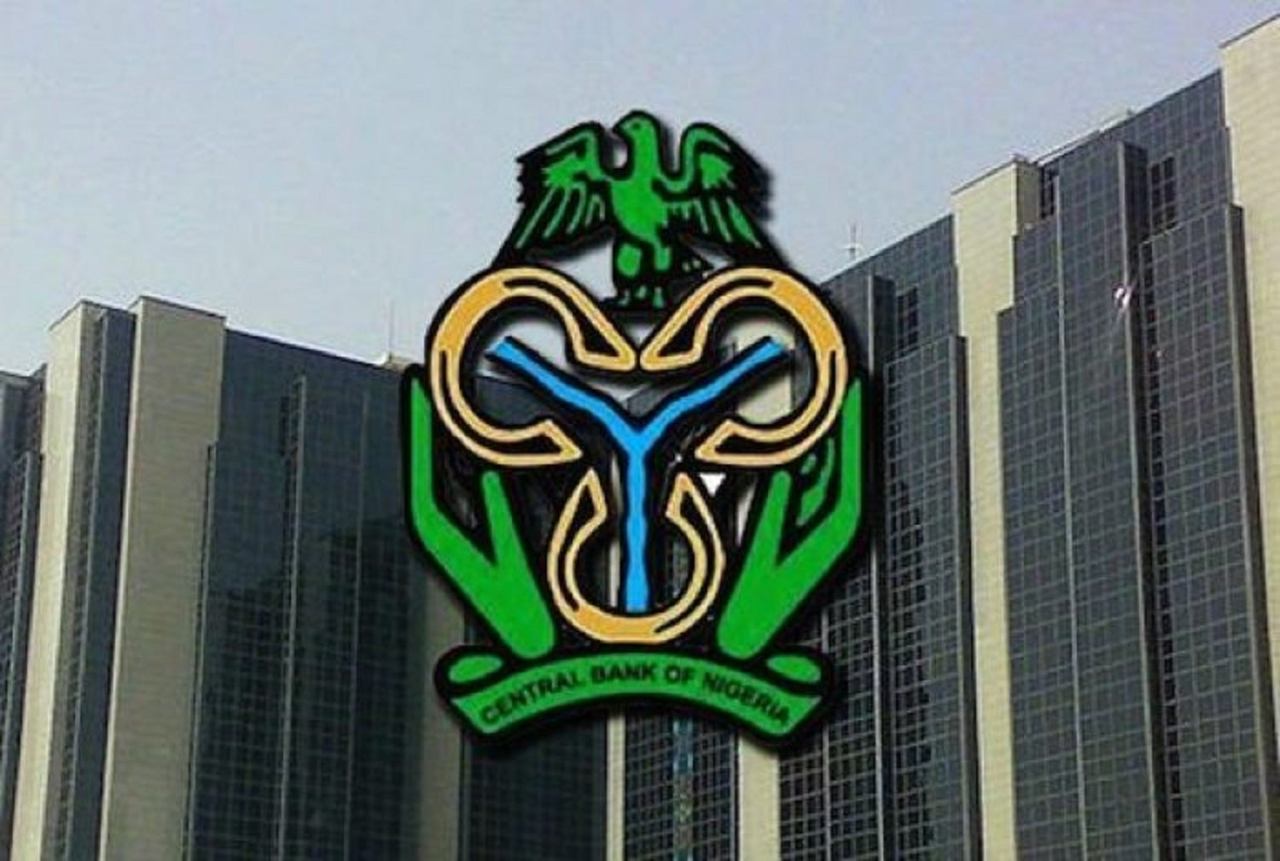CBN MPC reduce MPR to 12.5%, retains CRR at 27.5%

By Ngozi Onyeakusi–The Monetary Policy Committee (MPC) of the Central of Bank of Nigeria has reduced the Monetary Policy Rate to 12.5 per cent from 13.5 per cent.
It however retained the Cash Reserve Ratio and the liquidity ratio at 27.5 per cent and 30 per cent respectively.
Emefiele said, “Available output data from the National Bureau of Statistics showed that real Gross Domestic Product grew by 1.87 per cent in the first quarter of 2020 compared with 2.55 and 2.10 per cent in the preceding and corresponding quarters of 2019 respectively.
Here is the Communique from the meeting
CENTRAL BANK OF NIGERIA COMMUNIQUÉ NO. 130 OF THE MONETARY POLICY COMMITTEE MEETING HELD ON THURSDAY 28thMAY 2020
The Monetary Policy Committee (MPC) met on 28th May, 2020 in an environment of severe macroeconomic shock caused by the fatal spread of the Novel COVID-19 Pandemic, which first started as a health crisis in December 2019 in China and quickly morphed into a global economic crisis in the ensuing months. The pandemic induced economic shock is mainly characterised by disruptions to the global supply chain, on account of the mitigating measures including lockdowns, travel bans, and quarantines put in place by various governments to contain the spread of the disease. The effects on the global economy have been unprecedented and indeed severe. These include significant stock market crashes; exchange rate volatilities; rising corporate and public debt; rising levels of unemployment; tightening financial conditions; capital flow reversals; and negative shocks to commodity prices, to mention a few.
Under this period of economic crisis, the Committee assessed the developments in the global and domestic economic environments in the first five (5) months of 2020, and the outlook for the rest of the year. Ten (10) members of the Committee were in attendance.
Global Economic Developments
The Committee reviewed developments in the global economy, noting the swift and widespread monetary and fiscal stimulus responses to mitigate the economic crisis and avoid economic recession. They observed that since the duration of the pandemic is unknown, forecasts for global growth projection for 2020 differs amongst institutions and central banks. While the IMF output growth forecast for 2020 was downgraded to contract by 3.0 per cent in 2020, compared with an initial growth projection of 3.3 per cent, the forecast by the Organisation of Economic Co-operation (OECD) and Development showed a moderation in global output growth from 2.9 per cent in 2019 to 2.4 per cent in 2020 and 3.3 per cent in 2021. Most central banks in Emerging and Developing Economies (EMDEs) have mixed forecasts for their economies, reflecting the intensity of the demand and supply shocks, as well as the effectiveness of the mitigating measures and stimulus by their monetary and fiscal authorities.
The MPC also noted that inflation in most Advanced Economies remained largely below their 2.0 per cent long-run targets. This was partly due to supressed aggregate demand, occasioned by lockdown with restrictions on movement and economic activities, with resulting low expectations of future income, forcing spending to be directed to only essential goods and services.
The Committee, however, noted that, although, recent monetary decisions in most advanced economies had been accommodative, portfolio flow reversals from Emerging and Developing Economies had continued, indicating general rebalancing of portfolios toward cash and gold as safe assets by investors. This development has resulted in renewed pressure on exchange rates of some Emerging and Developing Economies with a likely pass-through to their domestic prices. In addition, a likely medium-term impact of these synchronized liquidity injections and other forms of monetary accommodation is the compounding of the already huge global corporate and public debt portfolios which may result in a spike in global debt post-COVID-19.
Domestic Economic Developments
Available output data from the National Bureau of Statistics (NBS) showed that real Gross Domestic Product (GDP) grew by 1.87 per cent in the first quarter of 2020 compared with 2.55 and 2.10 per cent in the preceding and corresponding quarters of 2019, respectively. This was driven largely by 5.06 per cent growth in the oil sector and 1.55 per cent in the non-oil sector. The economy, however, expanded by 2.27 per cent in 2019, the most since 2015, compared to 1.91 per cent in 2018. The positive but lower growth observed in Q1 2020 is expected to dip slightly, on the back of the combined monetary and fiscal stimulus by the monetary and fiscal authorities to ensure that growth at this time is supported to avoid a recession.
The Manufacturing and non-Manufacturing Purchasing Manager’s Indices (PMIs) declined significantly to 42.4 and 25.3 index points, respectively, in May 2020, compared with 51.1 and 49.2 index points in March 2020. The decline in manufacturing PMI was significant following thirty-six consecutive months of expansion, while the non-Manufacturing PMI contracted for the second consecutive month. The contraction in the manufacturing and non-manufacturing PMIs was attributed to slower growth in production, new orders, employment level, raw materials and input prices. The employment level index for the manufacturing and non-manufacturing PMIs also contracted further to 25.5 and 32.0 index points, respectively, in May 2020 compared with 47.1 and 47.3 index points in March 2020. Generally, the purchasing managers’ activities in May 2020, were largely affected by the lockdown of the global economy to curtail the spread of the COVID-19 pandemic.
In the light of the above developments, the Monetary Policy Committee commended the Bank’s effort on the recent measures put in place to mitigate the economic impact of the twin shocks on the Nigerian economy. The Committee expressed support for the sustenance of the broad-based stimulus and liquidity facilities being provided to curb the adverse effects of the shocks.
The Committee also noted with concern the persisting uptick in inflation for the eighth consecutive month as headline inflation (year-on-year) rose to 12.34 per cent in April 2020from 12.26 per cent in March 2020. The uptick largely reflected the increase in both the food and core components, which rose to 15.03 and 9.98 per cent in April 2020 from 14.98 and 9.73 per cent in March 2020, respectively. The MPC noted that the recent increase in inflationary pressure was largely due to a combination of factors including; disruptions in supply chain owing to restrictions on inter-state travels; reduced domestic supply of foreign exchange; continued impact of deteriorating domestic infrastructure; and spillover effects of the Pandemic on global supplies, amongst others. Against this background, the Committee emphasized the need to sustain measures already put in place to maintain price stability. It noted that as the supply of goods and services increase, following the gradual easing of the lockdown and return of economic activities, particularly in the informal sector by which the daily paid workers access daily income, there would be increase in aggregate supply to the economy.
On monetary aggregates, the Committee noted the marginal growth in broad money (M3) to 2.66 per cent in April 2020 from 2.42 per cent in March 2020, largely due to increases in Net Domestic and Foreign Assets. The growth in M3 was, however, significantly below the indicative benchmark of 13.09 per cent for 2020. Aggregate Net Credit also grew significantly by 8.07 per cent in April 2020 compared with 4.90 per cent in March 2020, although this remained below the indicative benchmark of 16.85 per cent for the year. The Committee, therefore, observed that there was relative scope for increased money supply to fund economic activities and boost output recovery.
In the review period, money market rates remained relatively stable reflecting the prevailing high liquidity condition in the banking system. Accordingly, weighted average Inter-bank call and Open Buy Back (OBB) rates decreased to 7.33 and 5.52 per cent in April from 10.29 and 11.78 per cent in March 2020, respectively.
The Committee observed that though the equities market was largely bearish in the first quarter of 2020, moderate improvement continued to be recorded since the beginning of the second quarter. Consequently, the All-Share Index (ASI) and Market Capitalization (MC) increased by 18.33 per cent a piece, between end-March 2020 and May 22, 2020. This bullish trend reflected improved investor sentiments in response to the mitigating measures introduced at the onset of the pandemic by the monetary and fiscal authorities and positive outlook in the global oil market. The MPC expressed confidence that the current monetary and fiscal policy measures would further strengthen investor confidence.
The Non-Performing Loans (NPLs) ratio decreased to 6.58 per cent at end-April 2020 compared with 10.95 per cent in the corresponding period of 2019 due largely to recoveries, write offs and disposals. The development was adjudged by the Committee as a sign of reasonable stability in the banking system and urged the Bank to maintain its toolkit of prudential and regulatory measures to ensure that NPLs stay below the prudential benchmark of 5.0 per cent.
Outlook
The overall medium-term outlook for the global economy remains broadly uncertain as the COVID-19 pandemic and associated containment measures continue to disrupt normal economic activities across the globe. The global economy remains largely confronted with several headwinds, some of which include: weak aggregate demand due to declining consumer and investor confidence; disruption in global supply chains; shocks to oil and other commodity prices; continued lull in global financial markets; adverse shocks to global capital flows; as well as rising corporate debt in the advanced economies and public debt in some Emerging Market and Developing Economies.
Available data on key macroeconomic variables in the domestic economy indicate that the economy achieved a positive output growth during the first quarter of 2020. The Committee noted that even if the lag effects of COVID-19 result in a low negative output growth in the second quarter of 2020, it could quickly be reversed to avoid a recession by Q3 2020 based on the far-reaching measures taken by the monetary and fiscal authorities to mitigate the combined effects of the COVID-19 pandemic and oil price shock. Projections by both the IMF and Federal Government indicate that the economy would contract in 2020 by -3.40 per cent. Given more recent developments, however, CBN Staff projections indicate a somewhat less pessimistic range of contraction. This forecast is underlined by the measures to arrest the rapid spread of COVID-19; improvement in crude oil prices which stood at about US$34.8 per barrel as at 28th May 2020. The moderate recovery in crude oil prices would reduce the pressure on the external reserves and government revenue. Headwinds to growth, however, remains the legacy issues of the persistent infrastructural and security challenges.
The Committee’s Considerations
Central to the Committee’s considerations were the impact of the COVID-19 pandemic, the oil price shock and the likely short to medium-term consequences on the Nigerian economy. In particular, the Committee acknowledged the gradual improvement in macroeconomic variables particularly the improvement in the equities market, the containment measures of the COVID-19 induced health crisis, as well as, the impact of the increase in crude oil price on the external reserves.
The Committee noted the stability in the banking system shown by the increase in total asset by 18.8 per cent and total deposits by 25.52 per cent (year-on-year). The performance of the Loan-to-Deposit Ratio (LDR) policy which was introduced in July 2019 showed that total credits increased by N3.1 trillion or 20.45 per cent, with manufacturing, retail & consumer loans, general commerce and agriculture as major beneficiaries.
The Committee recognised that under the N100 billion Healthcare Sector Intervention Fund, the Bank has approved and disbursed N10.15 billion for some projects for the establishment of advanced diagnostic and health centres and the expansion of some pharmaceutical plants for essential drugs and intravenous fluids. As part of the N1trillion intervention targeted at Agriculture and Manufacturing firms, the Bank has further disbursed N93.2bn under the Real Sector Support Fund to boost local manufacturing and production across critical sectors. This consists of over 44 greenfield and brownfield projects. The Bank has also approved N10.9 billion to 14,331 beneficiaries under the N50 billion Targeted Credit Facility for households and SME’s, out of which N4.1billion has been disbursed to 5,868 successful beneficiaries. The Committee directed Management to reach out to the banks to encourage them to offer and disburse these funds to those priority sectors of the economy so as to stimulate aggregate demand and create more jobs.
The MPC appraised the Federal Government’s resolve to maintain the core of its spending plans for 2020 as this remained vital for the attainment of the much-needed economic recovery. It also applauded the government’s efforts at revising the oil price benchmark downwards to reflect prevailing conditions. It reiterated the urgent need for the Government to improve tax collections, through a gradual, but purposeful diversification of the economy’s revenue base. The Committee also urged Government to remain focused on the implementation of the revised 2020 – 2022 Medium Term Expenditure Framework (MTEF) as the basis for sustainable fiscal policy.
The MPC emphasized the need for Government to work towards a gradual reopening of the economy in line with recommendations of the Presidential Task Force (PTF) and advice from medical experts, insisting that efforts must be directed at saving not only lives but also livelihoods. This is to enable the resumption of economic activities necessary to stimulate growth, accelerate the pace of recovery and restore livelihoods, particularly the vulnerable in our society.
On prices, the MPC expressed concern about the heightened inflationary pressure attributed to a combination of monetary and structural factors. While price stability remains the Bank’s primary mandate, the Committee expressed the need for a balanced approach in supporting growth in the face of rising domestic prices.
With respect to output, the Committee urged the Federal Government to continue exploring options of partnership with the private sector to fund investment in infrastructure. This would aid employment generation, support production and boost output growth. The Committee also reiterated the need for both direct foreign and domestic investments to support growth in key sectors of our economy, including Nigerian auto manufacturing, aviation and rail industries. The Committee expects that on the backdrop of the various stimulus packages and increased credit at lower interest rates, the impact of the COVID-19 pandemic would be relatively less severe than had earlier been expected and the reversal in growth deceleration would become more optimistic.
The Committee commended the Bank’s role in effective oversight of the banking system, as evidenced by the relative stability in key financial soundness indicators and systemic resilience of the banking sector, in the face of severe external shocks.
On the choice before the Committee, the MPC observed the weakening of the global macroeconomic environment due to the adverse impacts of COVID-19 and drop in crude oil prices, which has resulted in negative output in most economies. The MPC also feels that the logical expectation is that to ensure that the global economy reverses from the recession timely, what policy makers must do is to take actions that will necessarily stimulate growth and recovery. For Nigeria, although the Q1 2020 GDP turned out pleasantly at 1.87 per cent and rate of inflation somewhat moderated, Nigeria may escape a recession if concerted efforts are sustained to stimulate output.
Accordingly, on balance on whether to hold, loosen, or tighten, MPC was of the view that tightening of policy stance is for now inappropriate. This is because tightening will result in further contraction of aggregate demand, leading to decline in output, which is necessary to sustain the supply chain for growth recovery. Tightening will also increase cost of credit and reduce investment and impact negatively on output growth.
As regards the option of holding previous policy stance, the MPC felt that a hold may indicate that the monetary authorities are insensitive to prevailing weak economic conditions. There is, therefore, the need to signal a direction towards immediate recovery. The Monetary Policy Committee also feels that a hold decision may slowdown the trajectory of the weakened economy, compared with a loosening stance, thereby slackening output growth,
On loosening, whereas the Monetary Policy Committee is concerned that excess liquidity engendered by loosening may overshoot the economy’s absorptive capacity and accelerate inflationary pressure, it nevertheless feels that given the slow rate of acceleration of inflation, the accommodative stance will stimulate aggregate demand and supply in the short term. This is because an accommodative stance, through a lowering of the policy rate will stimulate credit expansion to critically important sectors that will also stimulate employment and revive economic activity for quick growth recovery.
The MPC noted that if all stimulus packages already announced by the Bank such as concessionary rates, loan restructuring, and targeted loans to agriculture, manufacturing and health sector are well utilized, this will produce the desired impetus needed to boost economic recovery in Nigeria.
The Committee’s Decision
After reviewing the three options, the MPC noted that the imperative for monetary policy at the May 2020 meeting was to strike a balance between supporting the recovery of output growth while maintaining stable price development across inflation, the exchange rate and market interest rates. To this end, the Committee noted that the Cash Reserve Requirement (CRR) was recently adjusted upwards as a means of tightening the stance of policy. In its response to the COVID-19 pandemic, however, the Bank reduced interest rates associated with all CBN interventions from 9 to 5 per cent. Increasing MPR at this stage will thus be counter-intuitive and will result in upward pressure on retail market rates.
The Committee maintained that although a sharp decline in output growth is expected in Q2 2020 and may be the third quarter, if the current stimulus initiatives are proper implemented, the economy would reverse to positive growth by the fourth quarter. Hence the optimism on the part of the Committee that the economy may not slide into recession.
In view of the foregoing, the Committee decided by a unanimous vote to reduce the Monetary Policy Rate (MPR) and to hold all other policy parameters constant. Seven (7) members voted for a reduction of the policy rate by 100 basis points, two (2) members by 150 basis points and one (1) member by 200 basis points.
In summary, the MPC voted to:
I. Reduce the MPR to 12.5 per cent;
II. Retain the Asymmetric Corridor of +200/-500 basis points around the MPR;
III. Retain the CRR at 27.5 per cent; and
IV. Retain the Liquidity Ratio at 30 per cent.
Thank you.
Godwin I. Emefiele
Governor, Central Bank of Nigeria
28th May 2020







Leave a Reply